What is a Grid?
Grids are amongst the most underrated accessories a photographer could own. Those who have tried it can just not live without it.
No matter what category you fall in, this comparison will help you choose the grids that you must have.
What is a Grid?
Grids take the form of a metal or plastic insert that you put in flash reflectors.
Various models exist for different reflector sizes. They look very much like a honeycomb, and their most important characteristic is their degree value; 30°, 20° and 12°.
The smaller the number, the narrower the beam of light is.
A grid is meant to concentrate the light and offer a more or less focused light output.

Why Grids ?
Why use a grid?
Grids are not limited to just the hair light like many tend to believe.
They can be used in a wide range of situations, such as:
- A backlight to avoid flaring.
- A main light to only light the subject (extremely helpful outdoors or to create a black background).
- A fill light to be extremely precise and not have additional light all over the set.
- A background light to only light part of the background or to create a more interesting effect.
It’s always a good idea to have a few grids in your bags, particularly since they don’t eat up much space.
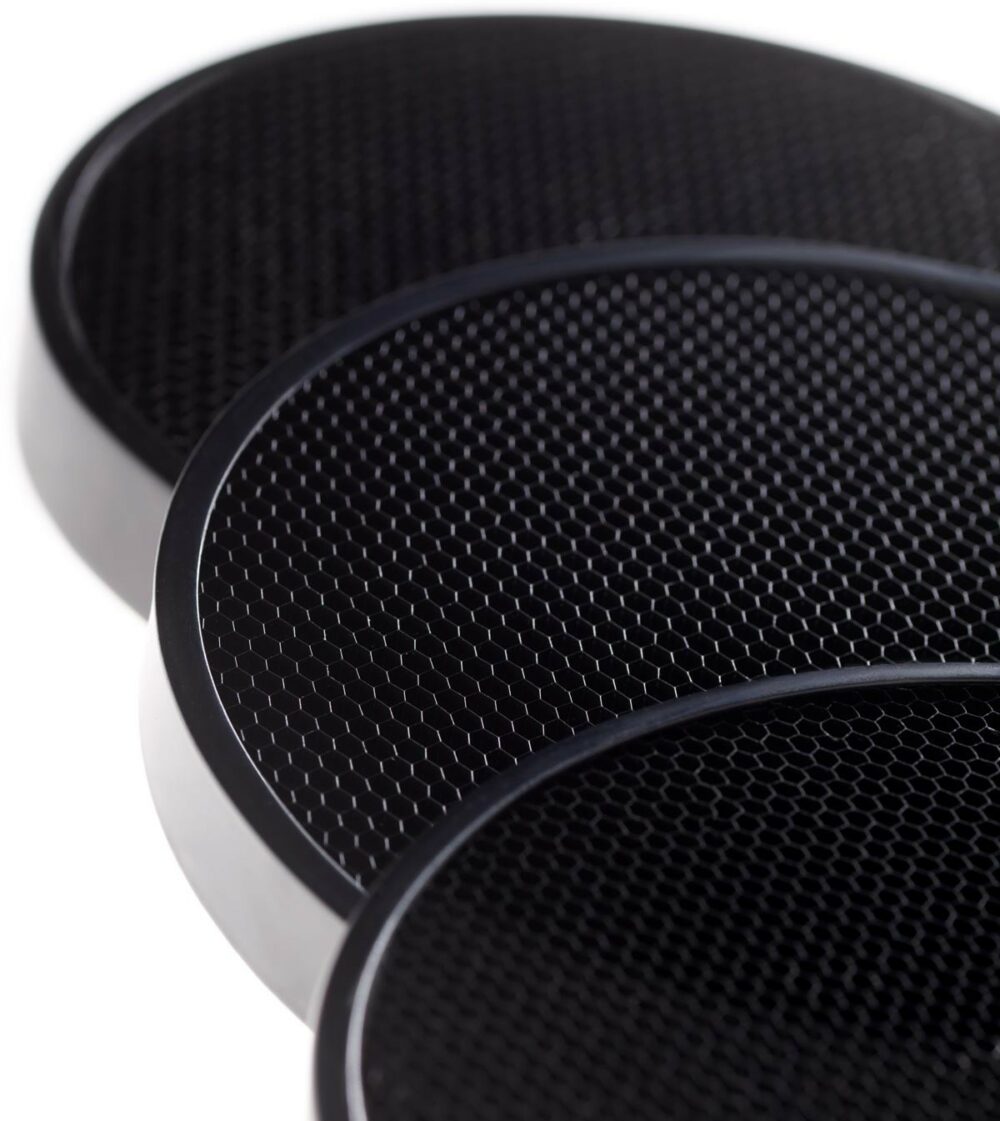
Comparison
The grids comparison.
For this comparison, I used the Reflector Grid Set 18 Complete.
I’ll show you exactly what the final result looks between the standard 18 cm 70° reflector with no grid or with either the 30°, 20°, or 12° grid.
Procedure:
The model was placed at 2.5 meters away from the background and the flash at 2.5 meters from her. The goal was to have a proper setup with just the standard 18 cm reflector, with the model’s shadow appearing.
Then I tried each grid to see how the lighting on the model and the background, as well as the shadow, would change.
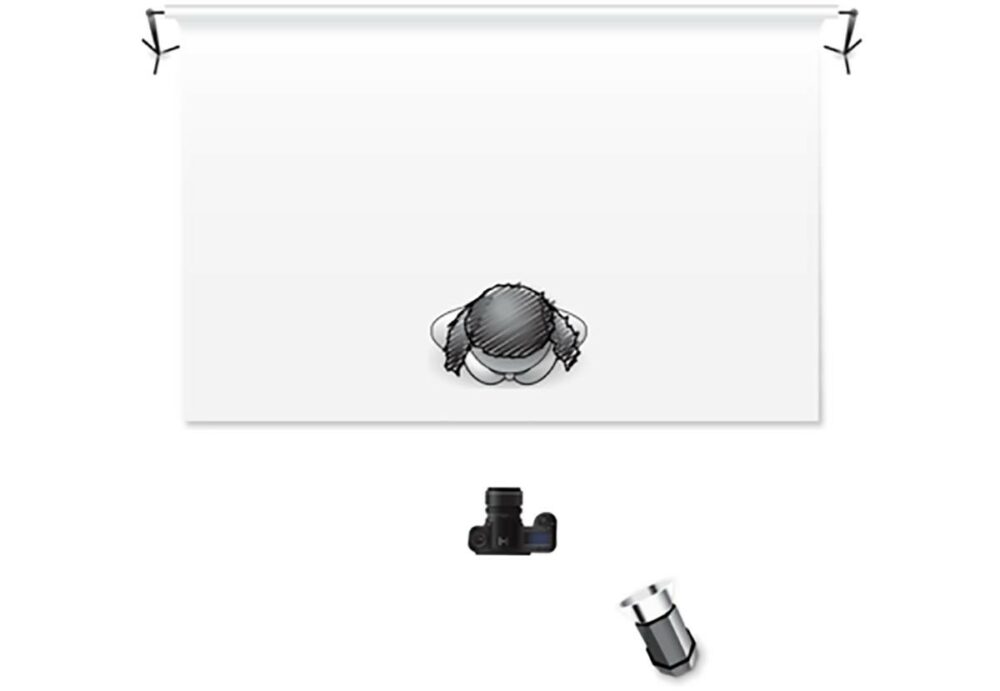
Example 1
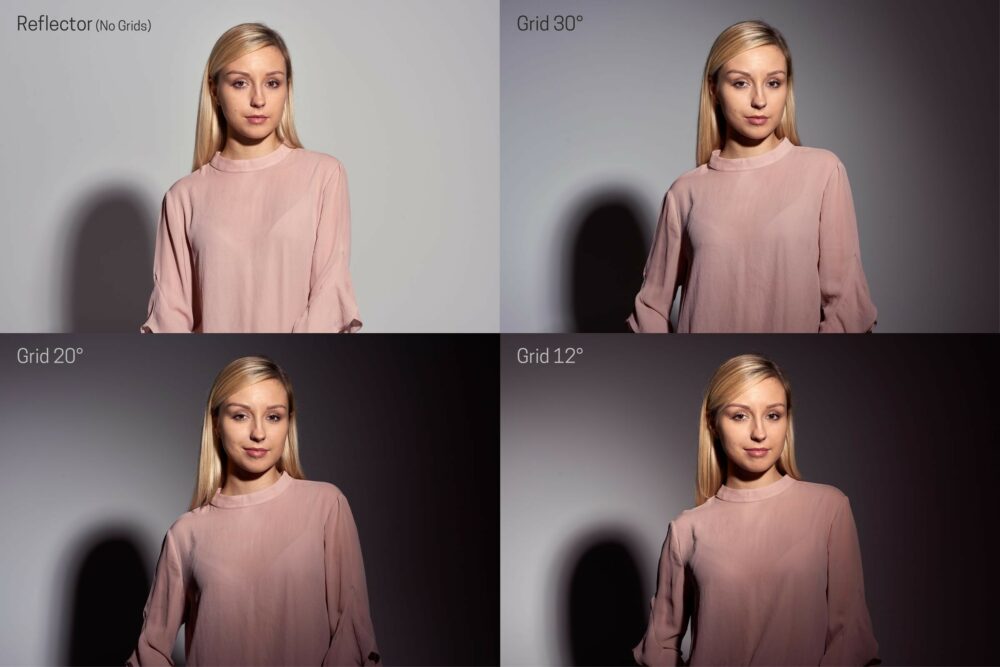
Example 2

Example 3
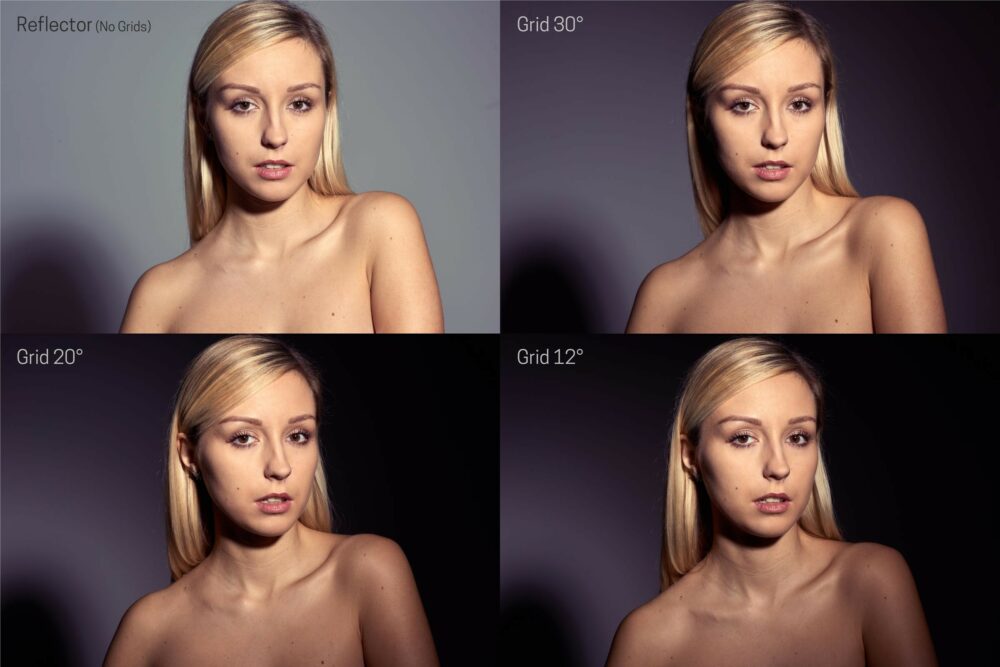
Note
The grids structure leads to a small loss of light. That’s why the flash power must be adjusted to match the same light meter reading for each shot.
My light meter showed a 1/2 stop difference between the bare reflector and the 30° grid, a 1/10th of a stop between the 30° and 20° grids, and a 1/3 of a stop between the 20° and 12° grids. In total, that’s about 8/10th of a stop between just the reflector and the reflector with a 12° grid.
All pictures shown in this article have only been processed in Capture One. No further retouching was applied to alter the fall-off of light.
How to start ?
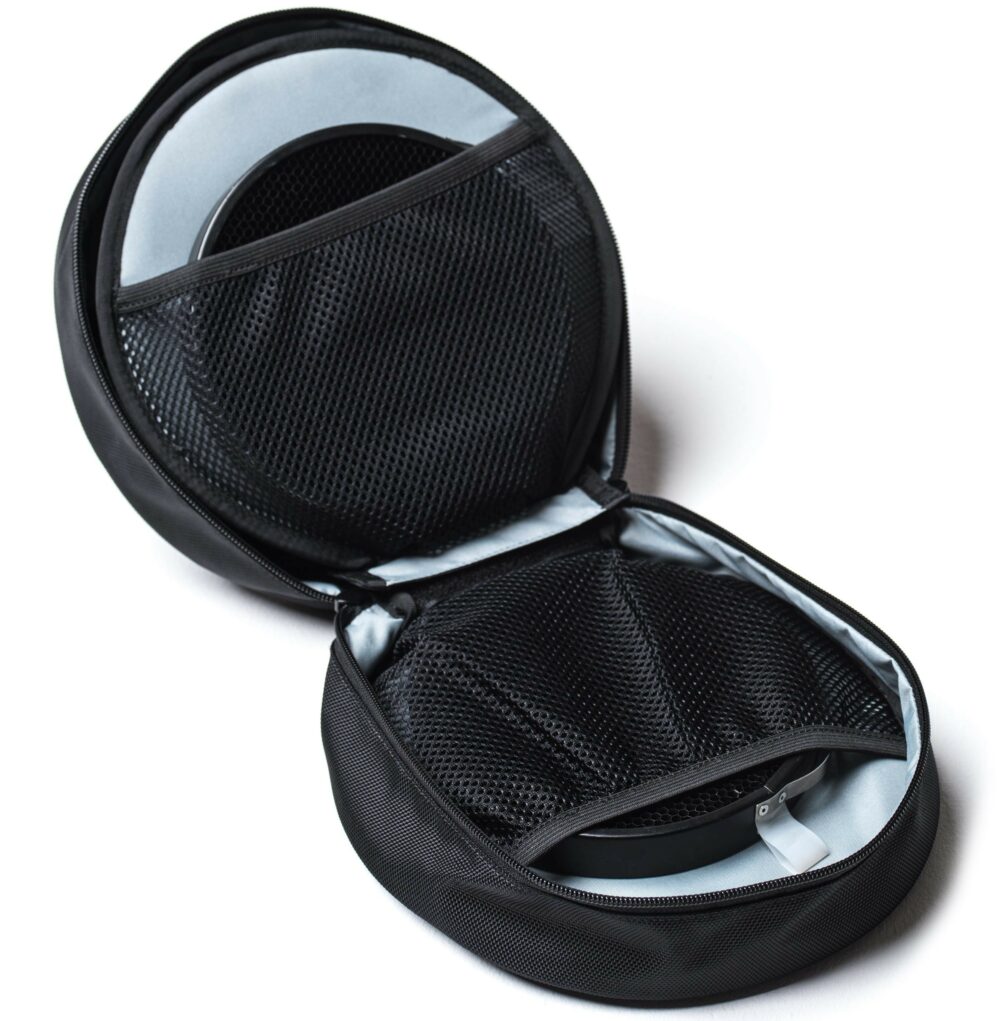
How to start with grids?
To help you get started with grids, here are two easy setups for you to recreate.
